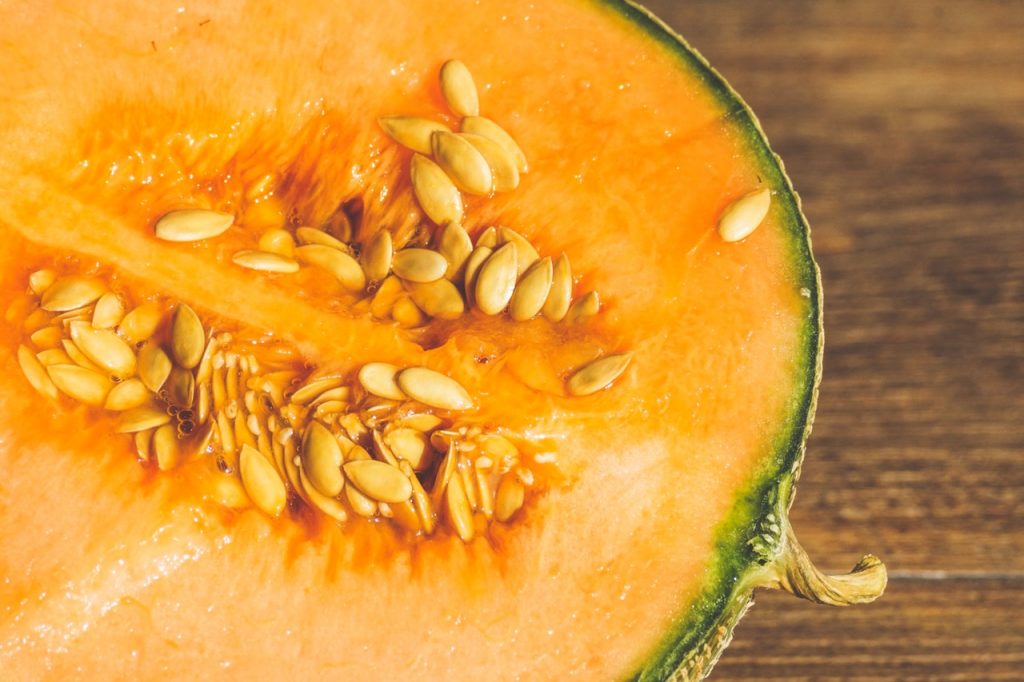Cantaloupes are grown in close contact with the ground, which may occasionally introduce bacterial contamination from soil, water or animals. Contamination from human contact may also arise during or after harvest.

Handling and Preparation
- Always wash hands and utensils (knives and cutting boards) before and after handling melons.
- Wash the outside of the melon with a clean vegetable brush under cool running water. Blot dry with clean paper towels.
- Place washed melon on clean cutting board. Cut about 1 inch off stem end. Position melon on cutting board with cut end facing down. With clean knife, slice melon vertically in half. Wash knife. Scrape out seeds with clean spoon. Continue to cut into slices, or as desired.
- Refrigerate cut melon at 40°F or below in a clean, air-tight container.
- Discard cut melon if kept at room temperature more than 2 hours.
Selection and Storage
- Ripe cantaloupe are golden, not green, underneath the webbed surface. The stem area of a ripe cantaloupe should be slightly indented and the opposite end slightly soft.
- Cantaloupe will ripen (soften and become more juicy) after harvest, but not become sweeter.
- For optimal storage, place fresh whole cantaloupe in the refrigerator crisper where humidity tends to be higher. Storage life of melons is dependent on variety, growing conditions, and initial degree of ripeness when purchased.
For additional information about growing, preserving, and preparing fresh fruits and vegetables, visit us online!


